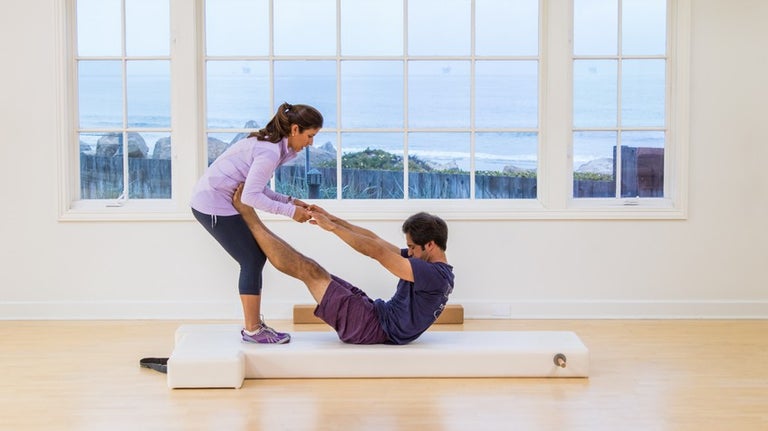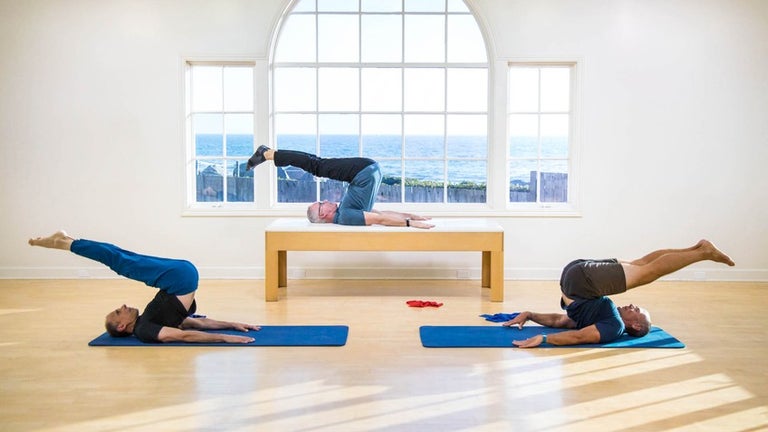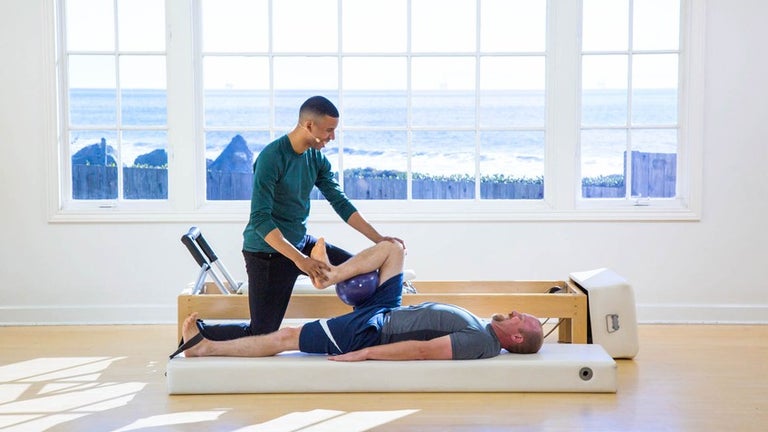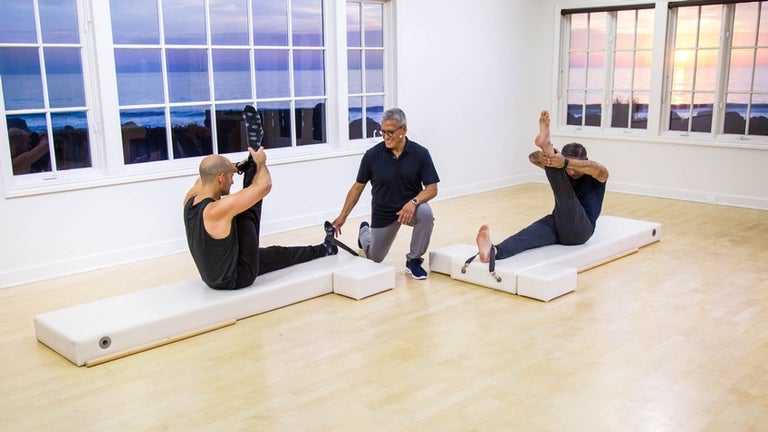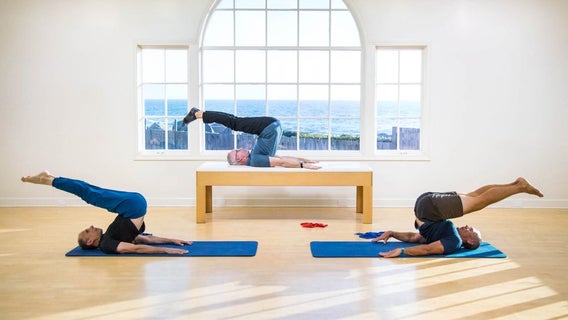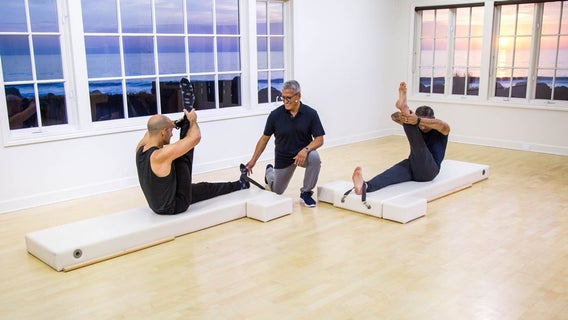Beginner Pilates For Men
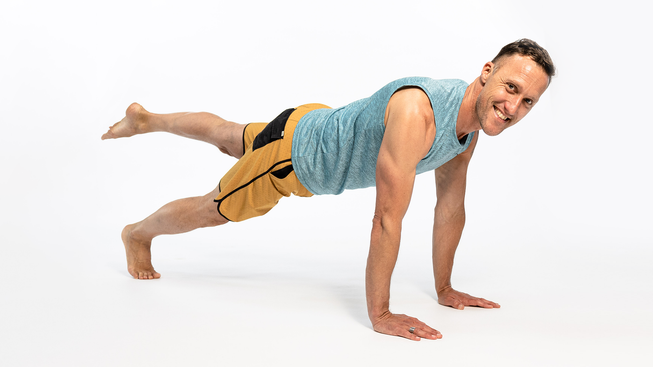
Beginner Pilates for Men
Starting a Pilates practice is one of the best investments any man, regardless of vocation, age or lifestyle can make. Plenty of men hear that Pilates is great for them or read about their favorite athletes adding it to their fitness regime. Many athletes use Pilates as a means to prevent or recover from injuries along with adding power to their sport. Unfortunately, many men are intimidated by the popular images of Pilates exercises that show awkward positions requiring a high level of flexibility. Pilates is a progression with numerous modifications and it’s meant for everybody. It was created by a man, predominantly for men.
Yoga vs. Pilates
Yoga and Pilates, though classified under mind-body exercise differ in many ways. In general, traditional Yoga, derived from India, is a means to connect the mind to the inner self and/or individual consciousness to universal consciousness.
Yoga is seen as an ethical way of living and is a lifestyle. Pilates is relatively young in comparison (created in the 1920s) and requires the individual to be mindful in order to connect to the inner workings of the body. Pilates is more focused on the physical body. Yoga involves repetitive movements and holding positions longer in an effort to go deeper into the body, and mind, while most breathing is done from the ‘belly’. Pilates on the other hand has short repetitions, continually moving from one exercise to the other. Pilates breathing is a training breath done laterally through the ribs in an effort to keep the core engaged.
Any individual with a yoga practice would benefit greatly by adding Pilates to their cross-training regime. Pilates targets and strengthens muscles that will stabilize and support joints providing a deeper foundation and enhancing the Yoga practice.
Mat vs. Reformer
Pilates incorporates a variety of equipment, however, the Mat and Reformer are widely accessible and commonly known. The Matwork is the foundation of Pilates and can be done anywhere utilizing bodyweight and, sometimes with the use of small props. The Reformer is a contraption with a sliding carriage moved by a pulley system. The springs enable varying degrees of tension adding resistance or in some exercises little to no resistance, requiring more strength and control.
Both are beneficial and most instructors teach a combination of the two. Starting with the Mat is a great way to build and understand the concepts of Pilates. Choosing between the Mat or Reformer with will depend on your goals and capabilities, which are best assessed with your instructor. In an ideal world, the individual would have access to both.
Results vary, however, the intricacies of the Matwork can be very challenging and harder to “cheat”, whereas the reformer can build strength faster. Either way one will enhance the other.
Beginner Classes For Men
Tips For Getting Started
What should I wear?
Clothing attire should be comfortable but not too baggy, allowing the instructor to see form and technique. Most studios don’t allow shoes inside and require socks for hygienic purposes. It’s best to wear grippy/non-slip socks to prevent slipping on the equipment. If you are working out at home, then it's a personal preference.
What equipment do I need?
The only equipment needed for Pilates is a soft, supportive exercise Mat. A regular yoga Mat doesn’t provide enough cushion for the spine, especially if you will be working out in an area with hard flooring. If you are taking classes online then you may want to invest in a few small props or look into some prop substitutions.
How should I prepare for my first session?
When starting at a Pilates studio, it’s a good idea to check their policies beforehand, most studios will have a breakdown of what to expect: arrival time, cancellation policy, what to wear, waiver forms and more.
If embarking on a Pilates journey online, you’ll want to familiarize yourself with common terminology or lingo.
What else should I keep in mind?
Pilates is no different from learning a new skill. Remember it’s a progression and you’ll want to give yourself more than one try or lesson. It may seem slow compared to other forms of fitness; a steady slower pace challenges the body in a new way with more focus on control and precision.
Your Pilates Anytime Membership Benefits
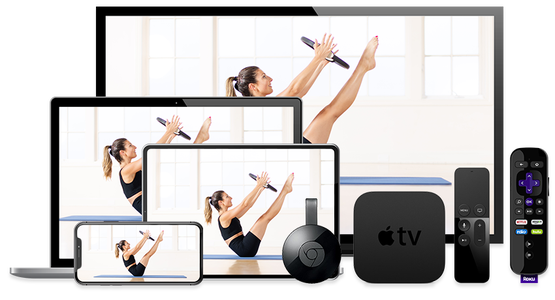
- 15-Day Free Trial
- Unlimited Access to Thousands of Classes
- 95+ Pilates Programs and Challenges
- No Ads
- New Videos Weekly
- Available on All Your Favorite Devices
